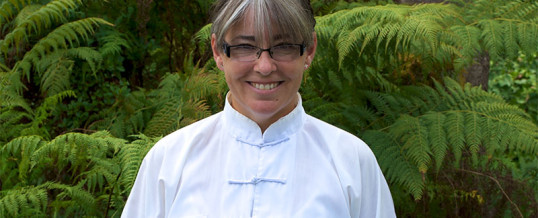
To learn the physical movements of the form alone takes quite some time, depending on how often lessons are conducted and how regularly students practise. Remember not to teach too much too fast. Tai Chi is not about how much you know.
It is not practical to teach any of the six sets sequentially from beginning to end. It best to create little sections and circuits within each set that are performable and continuously repeatable in themselves yet still provide the benefits of deep breathing, exercising the body from the inside out and calming the mind. This benefits and encourages the student as they have something complete to practise and therefore can reap the rewards of a discipline, which trains the body, mind and spirit. It is also beneficial for the teacher in terms of being able to direct how other movements are joined in.
OCT
2009

About the Author:
Tina Barry started learning tai chi in 1994. She became very interested and fascinated with tai chi having found a great and wonderful teacher, Grandmaster Ho Lo at the Tai Chi College of Australia. Tina has continued to study tai chi intensively under the guidance of Grandmaster Ho Lo since that time. Grandmaster Ho Lo’s understanding and teaching of the art of tai chi is deeply profound and Tina has grown, developed and nurtured her own immense appreciation for it with the aid of his incredible teaching. Tina’s understanding of the subtlties of tai chi continue to develop under Grandmaster Ho Lo's patient guidance. It seems the more she learns, the more there is to appreciate and understand and Grandmaster Ho Lo’s intensive teaching has remained inexhaustible after all these years. On occassion Grandmaster Ho Lo allows Tina to lead the students at the Tai Chi College of Australia through the tai chi form, appreciating her expression of tai chi. Sometimes Tina thinks perhaps she is getting it right!